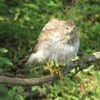 Announcements: If you are interested in going with us to our Costa Rica Trip, please drop me a line asap. We really need a couple more to make the trip! February 3-13. There will be a Rio Grande Valley Trip January 24-27 and the group is very small. Great birding and photography! We’ll go in the van. $500. Are there people who would like to do a Venezuelan Tour the second half of February? It’s a limit of four people, about 350 species and fabulous birding and photography. Very safe. $3000
Announcements: If you are interested in going with us to our Costa Rica Trip, please drop me a line asap. We really need a couple more to make the trip! February 3-13. There will be a Rio Grande Valley Trip January 24-27 and the group is very small. Great birding and photography! We’ll go in the van. $500. Are there people who would like to do a Venezuelan Tour the second half of February? It’s a limit of four people, about 350 species and fabulous birding and photography. Very safe. $3000

Accipiters constitute a worldwide genus of hawks which are curiously not especially well-known by average folks. Immatures, like this one, are brown with streaking under¬neath and adults are often steel blue-black on top with reddish barring underneath. This will be a case study of one of this species that took a break at my pond.

Accipiters seem to be rather slender hawks and this serves them well when flying through openings in the canopy, chasing smaller birds. Like many hawks, they have banded tails and this is likely a first-year bird. Given that it seems a little smallish for a Cooper’s, it is probably a male, and is of course, an immature.

It is very unusual for birds as skittish as accipiters to allow photographers to shoot from such close range, even through glass. This is only the second accipiter to visit my pond and the first in over ten years! The other was another immature Cooper’s. The other ones bathed at length and this one is just beginning, though it’s shallower. "

Accipiters have amazingly sharp eyes and their ability to spot hiding birds is renowned. Raptors also have the rare ability to have images magnified in their brain, not unlike our binoculars. And I have never heard an explanation for why so many hawks have yellow eyes, rather than other hues.

Buteos are stockier than accipiters, even Red-shouldered Hawks (this is an immature). They often have similar colors and patterns, like streaks, but accipiters are really slender with short wings and a long tail. I’ll have to say, too, that medium-sized hawks on poles and wires are almost always either Red-tailed or Red-shouldered. Accipiters just don’t perch along the road like that very often, although occasionally a Cooper’s will.



Birds often stretch their wings before flight because if they were to pull a muscle they would be severely hampered for hunting and defense. Our hero is loosening his left wing and stretching the tail at the same time. BTW, you can see the shorter steering feathers just beyond the bend of the wing (bird’s left wing) that control the direction of the bird’s glide. Also note the toes are not as powerful as buteos.

Bathing is very important with birds and we get our largest number in spring that seem to come in off the Gulf to get the salt air off their feathers. Salt is extremely water soluble. All raptors have an epignathus bill, curved down like you could do with your index finger. Accipiters have a notch on theirs (like some others) that grasps their prey’s neck and snaps it in two.

A more typical scene is the Cooper’s Hawk sitting atop a limb, watching for movement in the undergrowth. Accipiters are primarily bird eaters, chasing them through foliage and matching them move for move. Their short wings cut down on space needed and the tail serves as a rudder. They will take other smaller vertebrates like mice but they’re supremely adapted for chasing birds.

This is the most efficient killing machine known to man. It’s a Peregrine Falcon, the fastest organism on the Planet. Falcons dive out of the heavens onto birds, knocking them out with their balled-up talons and taking them to a perch to eat. Note the pointed wings. Can you imagine this bird trying to fly through a thick canopy? Note the longer tail for those mind-numbing stoops. They achieve speeds around 180 mph, like me on the Seawall. Oh, check out the black “helmet” pattern on the face. It cuts down on the sun’s glare so they can watch their target.

 Posted in
Posted in 
























